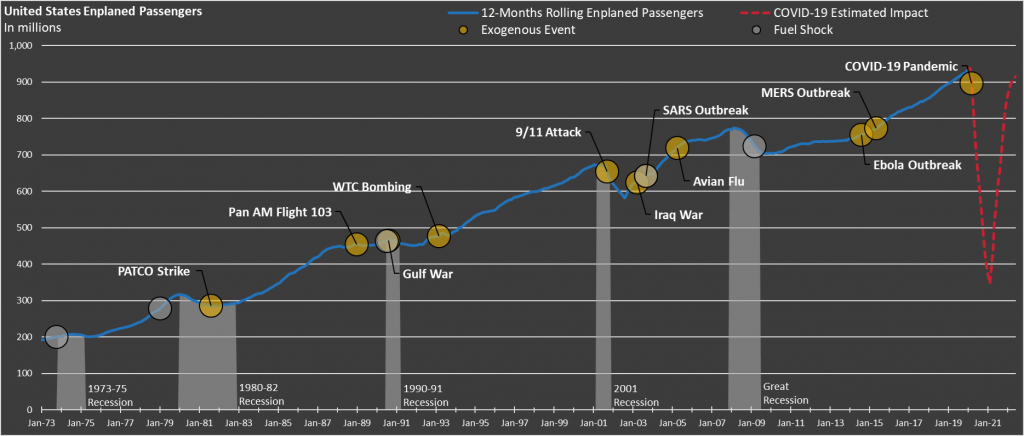Steps Towards Recovery for US Airports
The US national aviation system is currently in-shock due to the impacts of COVID-19. Airports face the challenge of creating new processes and strategies during this global public health emergency to ensure the health and safety of the traveling public and airport and airline employees.
As airports are moving quickly to prioritize projects in response to the CARES Act funding, they will also benefit by continuing to plan for the future. Once this crisis passes, airports will need a strategic plan to continue service in the advent of future shocks, as well as strategies to continue long-term growth.
Airports should focus on prioritizing “shovel-ready” projects for CARES funding now and should also work on getting their remaining projects to a “shovel-ready” state by completing environmental review and design. This will ensure that these remaining projects are in the best position to start construction when funding is available or when the system does recover.
For more information on financial questions airports should be asking themselves, considering the current crisis and recently passed Federal stimulus, see Issue 2 of L&B Lab Weekly.
Prepare for System Recovery
Although the sheer scale of COVID-19’s effect to our national aviation system has no precedent, our industry has experienced sudden system impacts before and has shown resilience for efficient recovery, as shown in the graph below. Every major worldwide incident, pandemic, or recession we have experienced has had immediate and significant impacts to aviation. However, once the event has passed, the system has consistently recovered. It is important to plan now for the next inevitable system recovery and return of growth.
U.S. Aviation System Shocks & Recoveries, Quarterly Enplaned Passengers

Airports are using insight gained during previous system shocks such as 9/11 and the Great Recession to help navigate the current COVID-19 pandemic. During the Great Recession, the airlines reduced scheduled air service, but some airports continued to plan, design, and construct not only to maintain business continuity, but to emerge strong, continue growth, and provide a high level of customer experience.
In addition to maintaining the safety and security of our airports, priorities should include:
- Developing strategies to maximize the regional economic benefits from CARES Act funding and the next stimulus package
- Investing in new technologies and processes for preventive safety measures against the spread of viruses, including the reconfiguration of existing or planned facilities to support new health processes/procedures
- Establishing a Resiliency PlanTM that unites ALL airport and tenant plans and operational programs, and ultimately reduces vulnerability to future system shocks
Airports need solid plans for recovery along with continued strategies for sustained growth. Financial planning for stimulus funds and creating new practices to address health and safety concerns are the immediate priorities. These will include resiliency planning to ensure preparedness for future changing conditions and disruptive events while still operating airports safely and efficiently. As an industry, we must continue to assure the traveling public our airports are well prepared to face rapidly changing conditions, are safe to use, and will do their part to carry the U.S. economy through future crises.
Contributors: Written by Jeffrey Jackson and Sara Hassert with Matthew Lee and Richard Barone.